This website has been archived from TrainWeb.org/s-trains to TrainWeb.US/s-trains.
Chuck Furlong's 'home-made' pick-up shoe for earlier AF Alco diesels
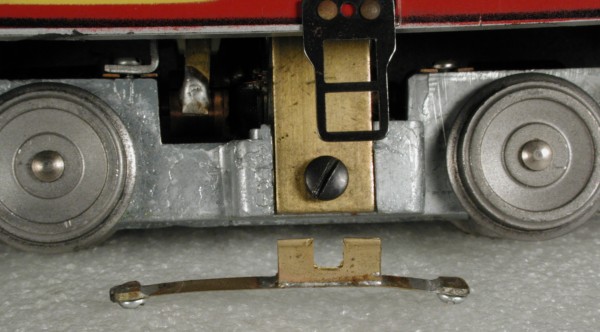
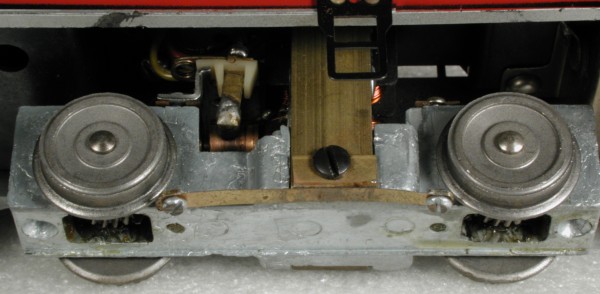
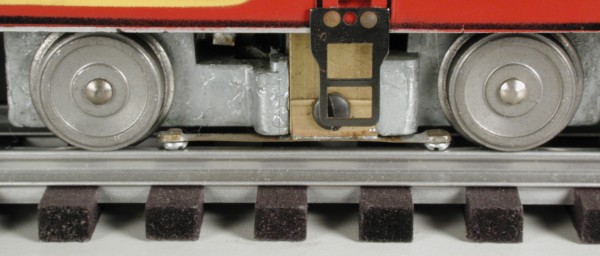
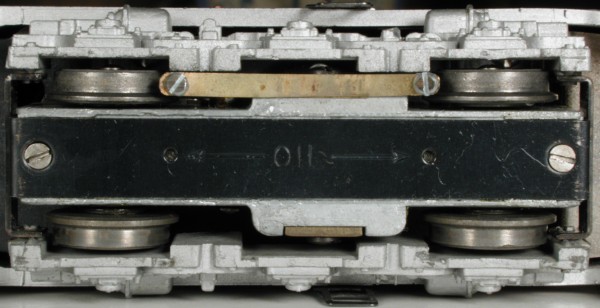
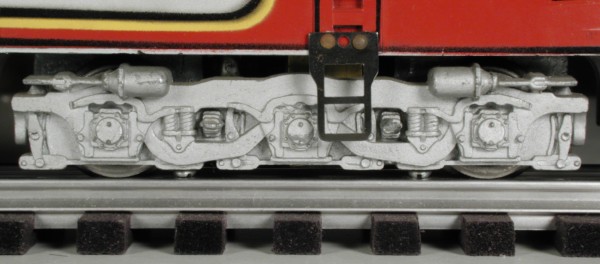 |
The base mount of the shoe is formed from a 1/2" length of 1/4" brass
angle. The bottom (horizontal) side of the angle is trimmed to about 1/8"
(or slightly less). A U-shaped slot about 1/8" wide is cut into the center
of the vertical side of the angle, down to about 1/16" from the bottom.
The resulting "fork" will slide under the head of the yoke screw.
Soldered to the base lengthwise is a "leaf" contact 1 3/4" long and 1/8" wide, made of 0.005" sheet brass. (Copper or bronze of the same thickness would be better, but brass is adequate.) The longer leaf end should be 25/32" from the nearest base end. The leaf will need to be located on the bottom (outside) of the base, with the leaf's outer edge protruding just slightly outside the vertical part of the base. This may take some experimentation; the exact side-to-side position of the leaf depends on how "bowed" your sideframes may or may not be, as well as how much side-play the wheels have. Soldered on top of each tip of the leaf is a 1/8" square piece of brass about 0.030" thick. This will provide some "meat" for screw threads. Screw hole centers are 3/32" from the ends, centered side-to-side, bored with a #50 drill bit. After tapping with a 2-56 thread tap, 2-56 machine screws can be inserted from the bottom up. Any excess shank will be cut away, so it pays to use the shortest screws available. I used round head screws, and ground the heads flat slightly to get more wheel clearance and smooth-out tracking. That chore could have been avoided (probably) by using pan head screws. I don't recommend counter-sunk screws for this. Since screws have been employed here for durability as well as replaceability, I used steel screws instead of brass. If I'm not mistaken, stainless steel screws are a bit harder than normal steel, and should wear even longer. Not having worn these out yet, I don't know just how long they will last. Most of the actions above were accomplished with the help of a moto-tool to cut, grind, and shape. A 25 watt soldering pen was adequate for all soldering, given the small size of the parts. The materials used are available at any hobby shop worthy of the term. Chuck |














